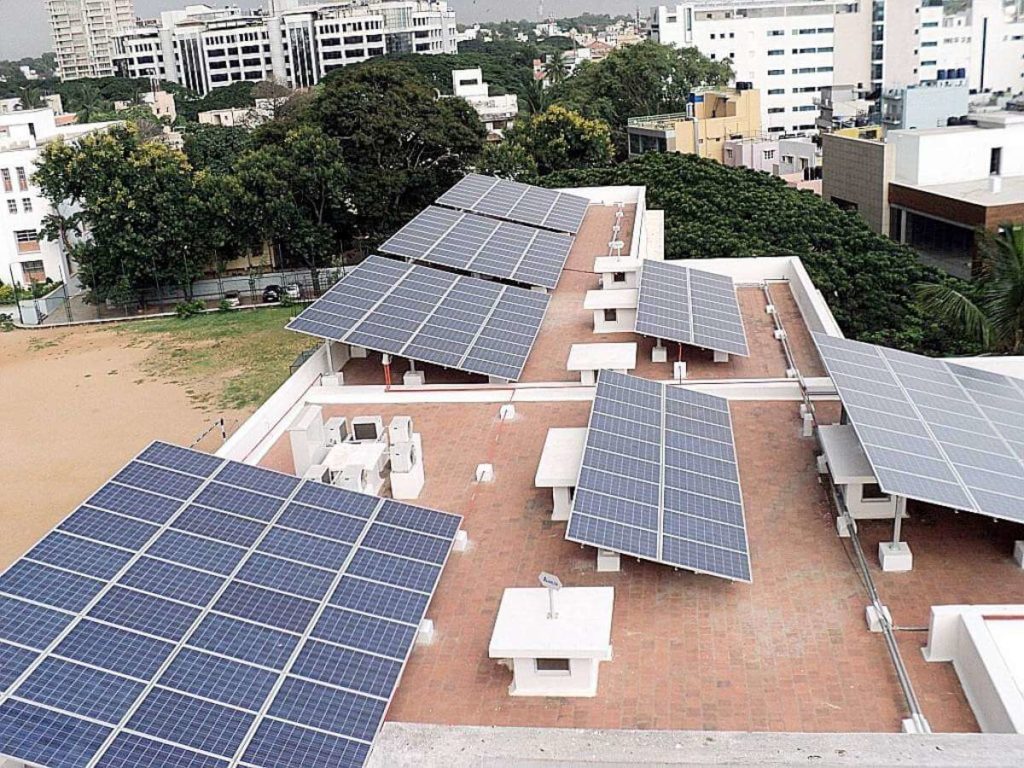Are you calculative and starting to think about saving on your electric bills? Then, you are questioning, “How many solar panels will power my house?”
Investing in Solar Panels has been a hot-selling thought. People are interested to adapt but unaware of the potential of solar energy. The majority of the population in India faces practical problems like operational issues, Block Investment, Tenancy, Financial, and Space Viability.
Despite all these scenarios, solar investors are contributing greatly to a sustainable future. Let us figure out your Plan to optimize your electric loads through solar technology.
How Many Solar Panels Do I need For A 1000 Sqft Home?
It is a common assumption that the size of your house determines the electric load. Myth! Generally, it may be the case but not always. Even smaller homes can have larger electric loads than larger homes. The bill depends upon the occupants, appliances, Insulation of the house, location and local weather, and many more factors.
Solar panel Setup does not depend on the footprint of the house. Rather it is directly influenced by the electric loads to be powered by the set-up.
Thus the correct question would not be about a 1000 sq. ft. house or other. Rather it would be about meeting the power requirement of the house.
How to Calculate the Number of Solar Panels Powering Your House?
The formula to help suggest the number of solar panels:

To work out this formula follow the guide as listed:
- Assess the monthly Electric consumption from your electric bill i.e. The Average kWh Units.
- Consult a professional to know the peak sunshine hours in your area. Sunshine hours are not just the sunrise to sunset hours; they suggest each hour the sun intensity reaches an average of 1000 watts per square meter. This will figure out the productivity of panels throughout the day.
- Calculating the Capacity of solar Set-up: Consider your Monthly kWh units. Then figure out the daily sunshine hours, multiply it with a factor of 30 to achieve monthly Sunshine hours. Divide Former with latter for a value of Capacity (kWh) of Solar Setup.
- Calculating Panel Count: Decide the wattage of a single panel to be used. Now divide the Capacity (W) of Solar set-up with the single panel wattage. This will figure out the number of solar panels required according to the consumption.
If you Select panels of high power rating you will require lesser panels, because each panel produces more power.
Example Calculation
A 1 KW Solar Panel usually generates 4 KW of Solar Power a day (on average) considering the sunlight patterns in India across the year.
Following are the assumptions made for this sample calculation
1. Average units consumed by household per month = 350 units (The Indian average is only 90 units but we have considered a upper middle class home with ACs in bedrooms)
2. The solar power is connected to the grid. The power produced by the solar panels are typically in the day time. So if you install an offline solar panel, then you need to account for the losses in charging and discharging of the batteries also. Here all the excess power is transferred to the grid.
Calculation:
Total number of peak sunshine hours = 4 hrs per day * 30 days = 120 hrs
Total number of 1 KW Solar Panels required to be energy neutral = 350/120 = 2.91 ~ 3 KW (Approximated)
For generating 1 KW electricity you need 4 solar panels considering the panels typically produce 250 Watts.
Number of 250 Watt panels you would required = 3 * 1000 Watts / 250 Watts = 12 Nos
*The calculation can be tweaked for your house energy requirements.
Do Solar Panels Make Sense for My Home?
As per the current scenario, fossil fuels are depleting ever so swiftly. One must think to shift towards sustainable sources of energy. Yet, Individual cases may differ according to real-time conditions like:
- Roof size
- Direction of Sun Exposure
- Financial viability of set-up v/s normal electric consumption
- Tenancy and Transient residing pattern
- Space Constraints
- Operational Issues
- Future Return for Block Investment of Installation
These factors can be deciding to adjudge the viability of solar panels for your home. Yet, Shading and Intensity of Sun exposure can restrain the output from the installation.
Though, it is tough to quantify all the above factors on your own. It is advisable to consult professionals for analysis of upfront costs and benefits of rebates on taxes that you may avail.

Factors Affecting the size of solar panel
To calculate the number of solar panels required to power your house, you will need to determine the following:
Monthly Electric Consumption: Assess and analyze the past monthly electric consumption through your monthly electric bills. The average range of kWh usage shall be considered.
Roof orientation and Local weather: As a thumb rule, installing solar panels requires maximum sun exposure. Also, the area should be free from shades. Consulting a professional to know-how the maximum Sun exposure direction and time duration will be beneficial.
Selection of Panel Wattage: The selected panels will determine the energy to be produced.
Takeaway Points
- Your solar panel set-up is dependent on the monthly power consumption not the footprint of the house.
- The more intense sunshine hours are received more efficient your solar set-up performs. The count of sunshine hours is inversely proportional to the number of panels required.
- Using higher wattage of panels will reduce the panel count
- Use high-efficiency Solar panels when the roof space is limited.
– Anshul Kulshrestha
 (+91) 7249196273
(+91) 7249196273
